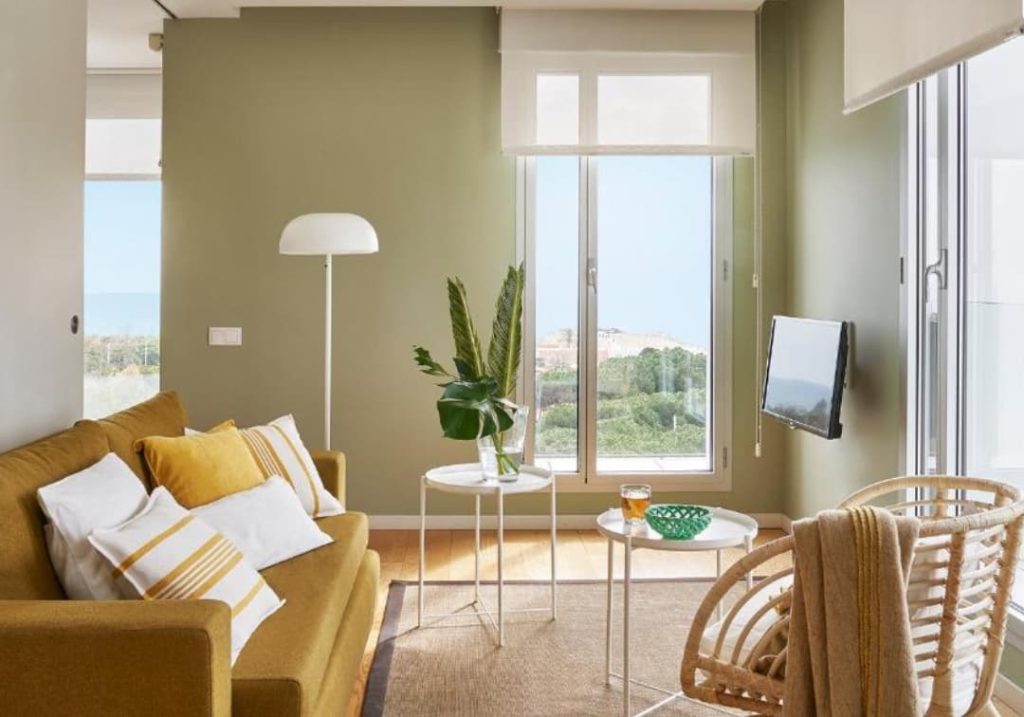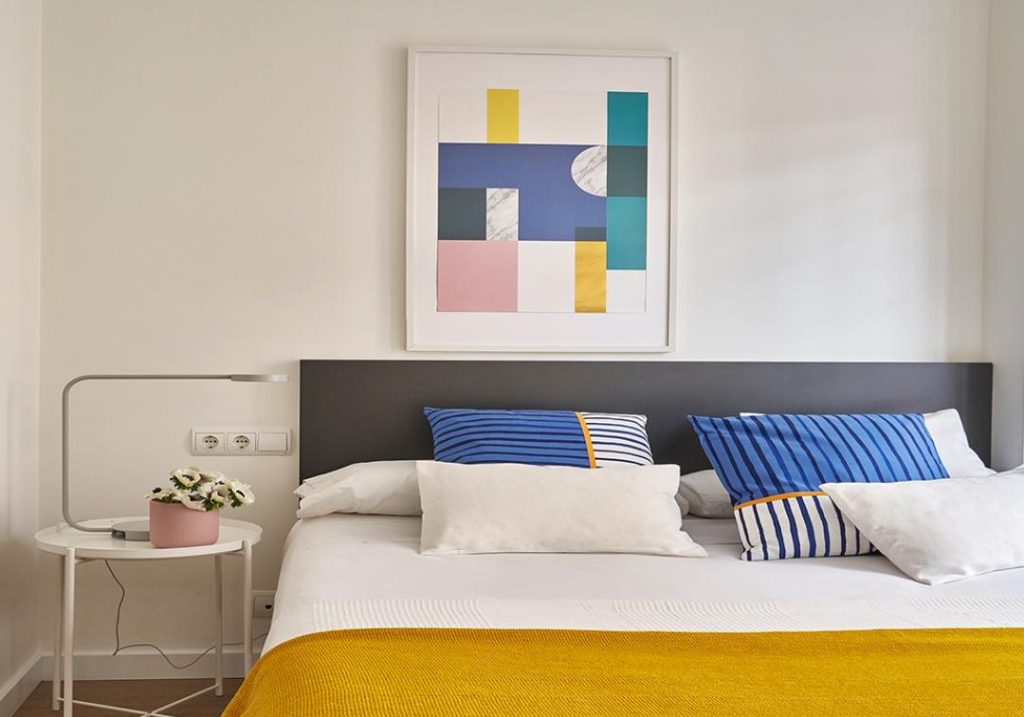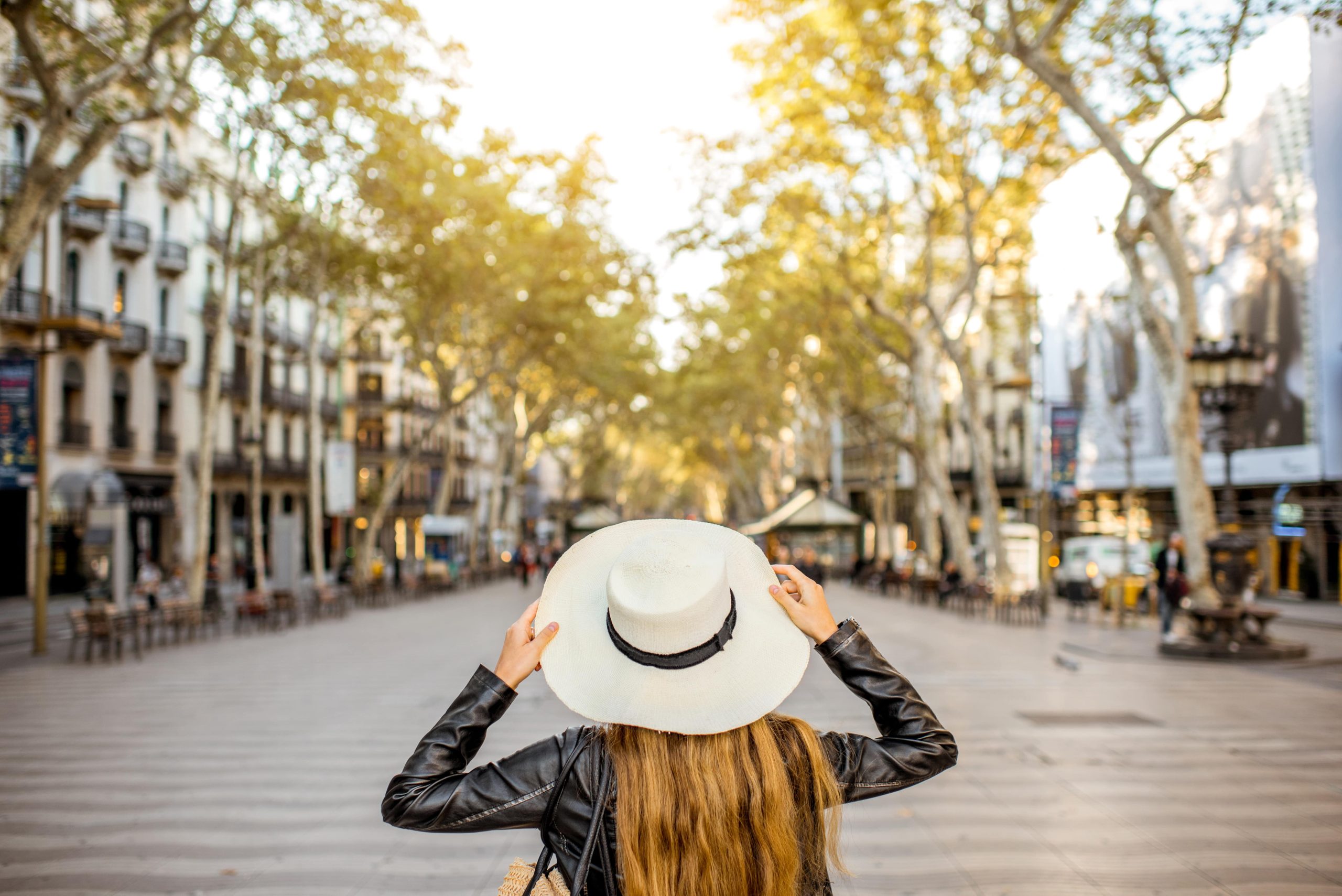- 1 Historia del distrito de Sant Martí
- 2 Los barrios de Sant Martí
- 3 ¿Qué ver en Poblenou?
- 4 ¿Qué ver en el Clot?
- 5 ¿Qué ver en Camp de l’Arpa del Clot?
- 6 ¿Qué ver en el El Parc i la Llacuna del Poblenou?
- 7 ¿Qué ver en La Vila Olímpica del Poblenou?
- 8 ¿Qué ver en Diagonal Mar i el Front Marítim del Poblenou?
- 9 ¿Qué ver en El Besós y el Maresme?
- 10 ¿Qué ver en Provençals del Poblenou?
- 11 ¿Qué ver en San Martín de Provençals?
- 12 ¿Qué ver en La Verneda y la Pau?
- 13 Otros puntos interesantes del distrito de Sant Martí
El distrito de San Martí de Provençals es uno de los más atractivos y extensos de Barcelona. Lo componen diez barrios, algunos de ellos de gran popularidad, que son visitados a menudo por los turistas. Es el caso del barrio de la Vila Olímpica, Poblenou o Diagonal Mar i el Front Marítim. El distrito de Sant Martí destaca por sus playas, sus zonas modernas plagadas de lujo, sus excelentes restaurantes y sus áreas de ocio. Desde aquí te queremos acercar a este distrito excepcional y hablarte un poco de su historia, sus puntos de interés y sus barrios.
Historia del distrito de Sant Martí
En el pasado, el distrito de San Martí era un territorio que se distinguía por ser muy amplio, aunque apenas tenía habitantes. Se encontraba ubicado a las afueras de la muralla de la Ciudad Condal, y el mar y la montaña formaban parte de ella.
Sin ir más lejos, no siempre los barrios El Besòs y Poblenou formaron parte del distrito. En sus inicios eran pantanos, lagunas y marismas que pertenecían al río Besòs. Sin embargo, a medida que la línea de la costa retrocedió, estas zonas fueron urbanizándose hasta convertirse en uno de los barrios residenciales más grandes de Barcelona.
Los romanos ocuparon antes que nadie el lugar y utilizaron sus tierras para levantar sus cosechas con objeto de proveer a la ciudad de alimentos.
El nombre actual del barrio, Sant Martí de Provençals, llegó tras la edificación de una capilla de estilo románico en honor a San Martín de Tours. Con el tiempo se convirtió en un territorio sagrado con algunas masías y una villa que durante bastante tiempo fue el centro neurálgico de San Martí.
Los barrios de Sant Martí
A fecha de hoy, teniendo en cuenta todos los distritos de Barcelona es el segundo con mayor población tras L’Eixample. También es el segundo distrito con mayor extensión edificada. Antiguamente era una zona llana por la que circulaban aguas y torrentes procedentes de Collserola, que desembocaban en el litoral.
Anteriormente, el distrito estaba formado por cinco zonas: La Verneda (norte de Sant Martí dels Provençals), Fort Pius (hacia el sur) el Clot-Camp de l’Arpa (oeste), Poblenou (centro) y El Besòs y el Maresme (este). A día de hoy, el distrito está compuesto por diez barrios perfectamente diferenciados:
- Poblenou
- El Clot
- El Camp de l’Arpa del Clot
- El Parc i la Llacuna del Poblenou
- La Vila Olímpica del Poblenou
- Diagonal Mar i el Front Marítim del Poblenou
- El Besós y el Maresme
- Provençals del Poblenou
- San Martí de Provençals
- La Verneda y la Pau
¿Qué ver en Poblenou?
Poblenou es un gran barrio con bares y cafeterías de moda, en los que poder tomar el aperitivo o uno de los mejores brunch de Barcelona. Cuenta con fábricas reformadas que ahora alojan oficinas, viviendas y galerías de exposiciones. Entre los lugares más destacados que podrás ver en Poblenou destacan: el Museo del Diseño de Barcelona, el rascacielos Torre Agbar y el mercadillo Els Encants. Por otra parte, la playa de Bogatell es perfecta para descansar, tomar el sol y jugar al vóley-playa.
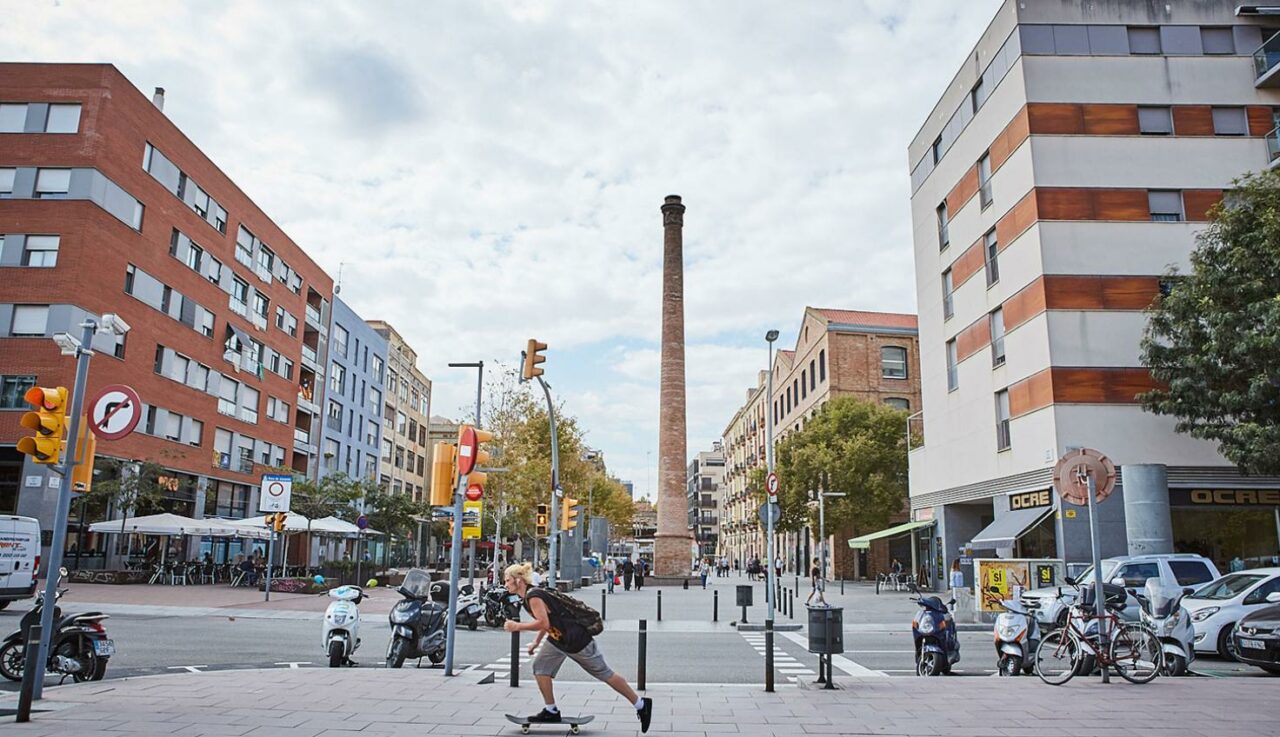
¿Qué ver en el Clot?
El Clot es un barrio moderno y a la vez tradicional, en el que se encuentra la Sede del Consejo Municipal del Distrito, el mismo edificio que una vez fue el Ayuntamiento del viejo municipio de Sant Martí de Provençals. No es un barrio especialmente conocido, pero es perfecto para vivir o alojarse en un apartamento temporal al estar rodeado por algunos de los barrios más populares de Barcelona: la Sagrada Familia, Sant Andreu, Poblenou y Horta Guinardó.
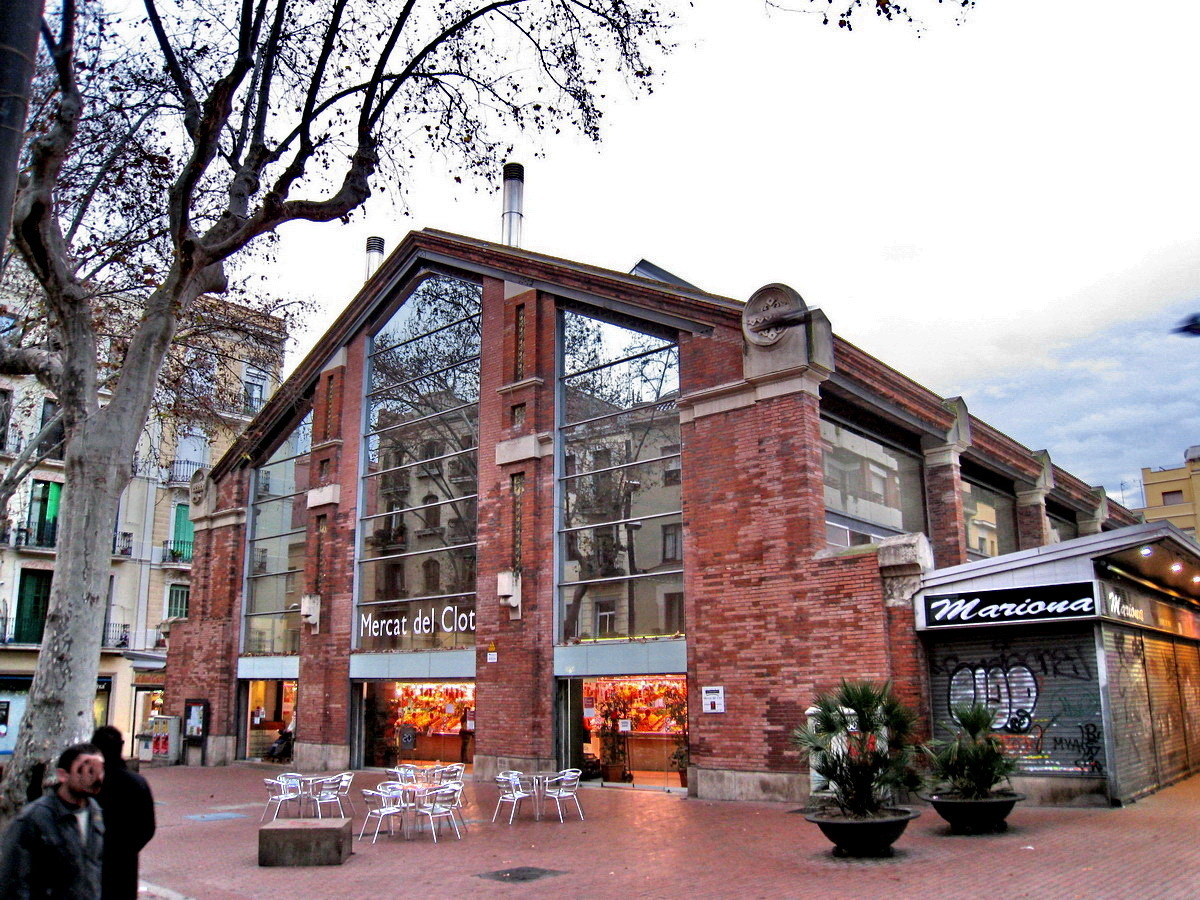
¿Qué ver en Camp de l’Arpa del Clot?
El Campo del Arpa del Clot no es un barrio muy turístico, aunque también es un gran enclave para vivir al contar con todas las comodidades necesarias. Además de escuelas y varios centros de culto, posee un cine tradicional, varios hoteles y salas de teatro. La plaça de la Oca es una de las zonas más populares y tradicionales del barrio al albergar un mercado callejero asociada a la Feria de Artesanos Plaza de la Oca.
¿Qué ver en el El Parc i la Llacuna del Poblenou?
El Parc i la Llacuna del Poblenou posee un gran carácter comercial e industrial. De hecho, el llamado proyecto 22@ se dedicó a remodelar parte del antiguo Poblenou, introduciendo novedades de gran calidad arquitectónica, así como empresas tecnológicas y viviendas de protección oficial y promoción privada. Se trata de un barrio en plena transformación, que alberga el Centro Comercial Glòries y una zona de ocio nocturna conocida como Marina con varias discotecas y bares musicales.
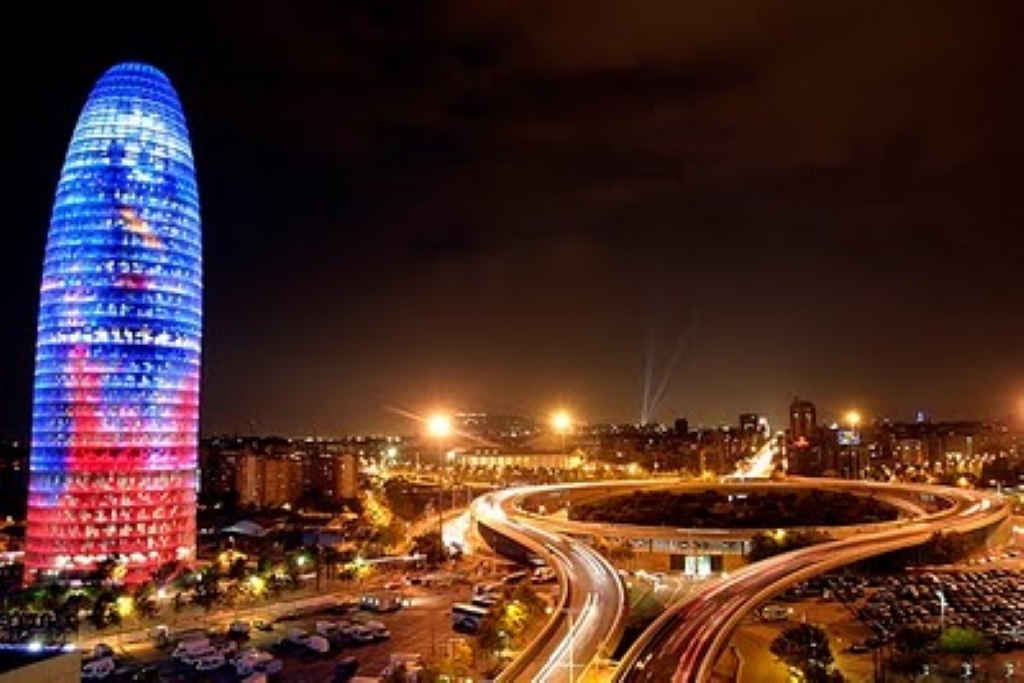
¿Qué ver en La Vila Olímpica del Poblenou?
La Vila Olímpica del Poblenou pertenece al Poblenou tradicional y fue reformada y habilitada para que los deportistas de los Juegos Olímpicos de Barcelona 1992 pudieran residir aquí. Es un barrio residencial que alberga varios colegios y un campus de la UPF con varias facultades y bibliotecas. Este barrio posee un centro comercial de nombre El Centro de la Vila y varios locales de ocio nocturno. Además, aquí se encuentra situado el Puerto Olímpico con capacidad para acoger muchas embarcaciones
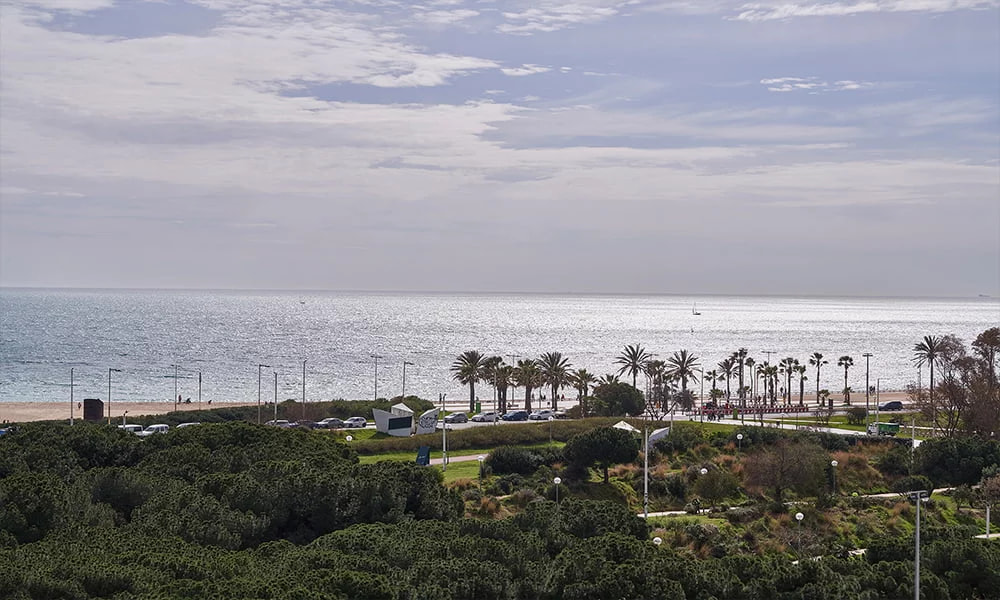
¿Qué ver en Diagonal Mar i el Front Marítim del Poblenou?
Diagonal Mar i el Front Marítim del Poblenou es uno de los barrios más recientes de Barcelona y fue creado a partir del plan urbanístico con motivo del Fórum Universal de las Culturas. Se encuentra al comienzo de la Avenida Diagonal y desemboca en el mar Mediterráneo, de ahí su nombre. Gran parte de este barrio está ocupado por el parque de Diagonal Mar.
¿Qué ver en El Besós y el Maresme?
El Besòs y el Maresme es otro de los barrios del distrito de San Martí, situado en la zona nordeste de la ciudad. En la zona enclaustrada en su litoral se erigió el parque del Fòrum, en un espacio compartido con San Adrián de Besós, dando lugar a un sorprendente espacio cívico en el que se celebró el Fórum Universal de las Culturas. En este mismo lugar se levantó el Centro de Convenciones Internacional de Barcelona, así como el Edificio Fórum en el que se encuentra el Museo de Ciencias Naturales de Barcelona. Después se construyó la sede de la compañía Telefónica, la Torre Diagonal Zero Zero.
¿Qué ver en Provençals del Poblenou?
En Provençals del Poblenou se encuentra entre la Gran Vía de las Cortes Catalanas, la avenida Diagonal o la rambla de Prim. Este barrio presenta dos zonas: la antigua área industrial y su zona residencial. En los últimos años se ha llevado a cabo la transformación y modernización de algunas de sus fábricas antiguas.
¿Qué ver en San Martín de Provençals?
San Martín de Provençals se creó por las reformas llevadas a cabo por el rey Felipe V y lo encontrarás en el sector noroeste de Barcelona. Su población aumentó de forma considerable en el siglo XIX y a principios del siglo XX, como consecuencia de la industria y su anexión a Barcelona. En el pasado, el sector de la industria se convirtió en su seña de identidad durante mucho tiempo.
¿Qué ver en La Verneda y la Pau?
La Verneda y la Pau se encuentra en el antiguo pueblo de San Martín de Provensals. Hasta los años cincuenta, la zona era ocupada mayoritariamente por masías y tierras de cultivo, cuyos escenarios fueron pintados por grandes artistas como Ricard Canals o Joaquín Mir. El barrio, tal y como hoy se conoce, comenzó a iniciarse en 1950 para atender la gran demanda inmobiliaria tras la llegada de inmigrantes procedentes de otras partes de España. Con el tiempo, el barrio fue mejorando en equipamientos y servicios. Actualmente se encuentra el polígono de viviendas La Paz.
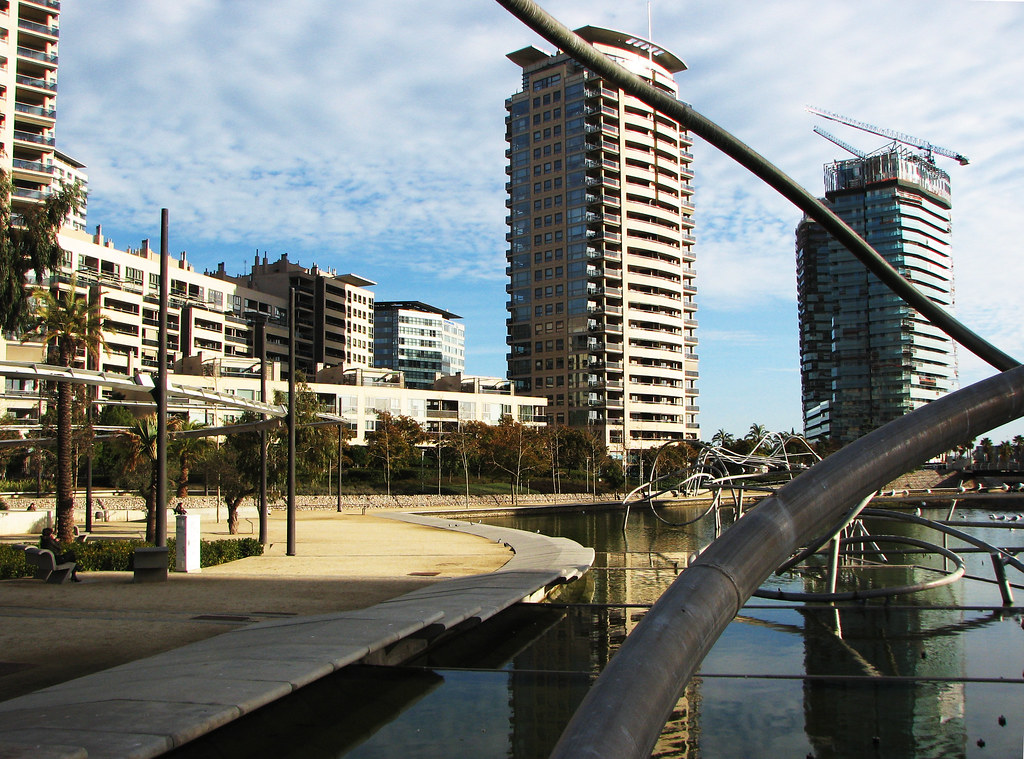
Otros puntos interesantes del distrito de Sant Martí
Sant Martí es un distrito muy apreciado por los barceloneses y una de sus principales opciones a la hora de vivir. Es lógico teniendo en cuenta que está cerca de la playa, que es una zona residencial con personalidad y que cuenta con una gran oferta cultural y de ocio.
- Las playas más famosas de Barcelona. Además de ser un increíble distrito residencial dotado con todo tipo de servicios y comodidades, dispone de los mejores parques y está en primera línea de playa. Junto con las playas de La Barceloneta, las de Sant Martí son las más famosas de la Ciudad Condal. De hecho, son muy estimadas por los barceloneses al poder surfear en ellas y disfrutar de un clima excepcional.
- Estupendas conexiones. Los barrios de Sant Martí están muy bien comunicados con diferentes líneas de autobús, tren urbano y metro. Al ser uno de los distritos más extensos y poblados de la ciudad, estas conexiones resultan fundamentales para sus habitantes. De hecho, si a una zona determinada, de las pocas que existen, no llega el metro, lo hará el autobús.
- Servicios públicos y privados. Hablamos de un distrito moderno con todos los alicientes necesarios para vivir con confort. De ese modo, no hace falta moverse mucho para acceder a los servicios imprescindibles para vivir.
- El 22@ (tecnología y startups). El 22@ es una iniciativa que transformó numerosas hectáreas de estilo industrial en espacios modernos para ser ocupadas por las empresas tecnológicas más punteras como Amazon, Yahoo!, Facebook, Ebay o Groupalia, entre otras.
- Lugar multicultural y artístico donde los haya. En el distrito de San Martí encontrarás lugares sorprendentes dotados de arte urbano, desde galerías de arte hasta mercadillos, pasando por graffitis en sus calles y cafeterías instagrameables.
- Gran personalidad industrial y underground. Su antigua zona industrial dotada de enormes naves fue rehabilitada para albergar viviendas (lofts y estudios de esencia neoyorquina), oficinas y escuelas. Lo mejor es que su estilo industrial permanece, convirtiéndose en una seña de identidad.
Te hemos mostrado qué ver en Poblenou o Diagonal Mar, pero el distrito de Sant Martí es más que eso. Lo cierto es que está viviendo un momento de esplendor espectacular sin perder su estilo y esencia como barrio.
Tanto si buscas una zona residencial con todas las comodidades como si prefieres un barrio clásico con tiendas de siempre, en Sant Martí seguro que encuentras lo que estás buscando. Y es que Sant Martí es un distrito básicamente residencial, aunque también es una de las zonas más visitadas de Barcelona por sus múltiples alicientes en restauración, cultura, ocio y arte.
NUESTROS APARTAMENTOS EN BARCELONA
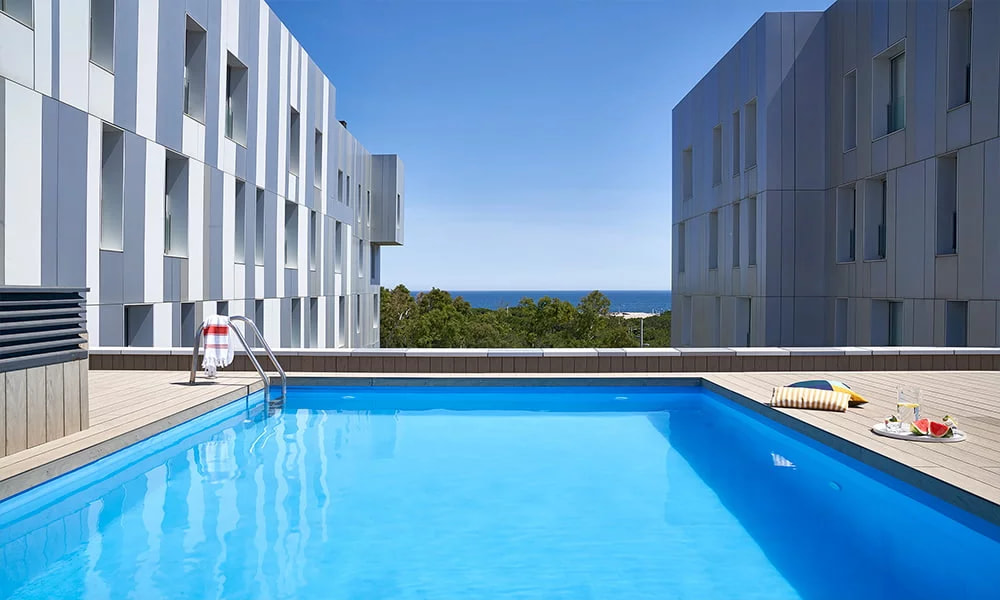
Holiday apartments by the beach in Barcelona
Since 2010, Lugaris Apartaments has been offering you the best holiday rental flats in Barcelona, perfect for a family holiday, with friends or as a couple, or for medium-term stays.
You can choose between apartments near the beach in Barcelona, at Lugaris Beach, with sea views, 2 swimming pools (one for adults and one for children) and capacity for up to 6 people, and the Lugaris Rambla flats, located on the Rambla de Poblenou and just 300 m from Bogatell beach, with a balcony or terrace of up to 22 m2 and ideal for couples or families and groups of up to 5 people. All our luxury flats in Barcelona are air-conditioned and equipped with all the appliances, furniture and bed linen you will need during your stay. They also have satellite TV and free high-speed Wi-Fi connection, as well as a safe and a 24-hour private security service.
What’s more, when you make your booking, you can reserve many other additional services: international press in your flat, parking space, transfer service to and from Barcelona airport, bicycle hire, supermarket shopping, museum, sports and show tickets, babysitting service and much more.
For more information, contact Lugaris Apartments without obligation.

